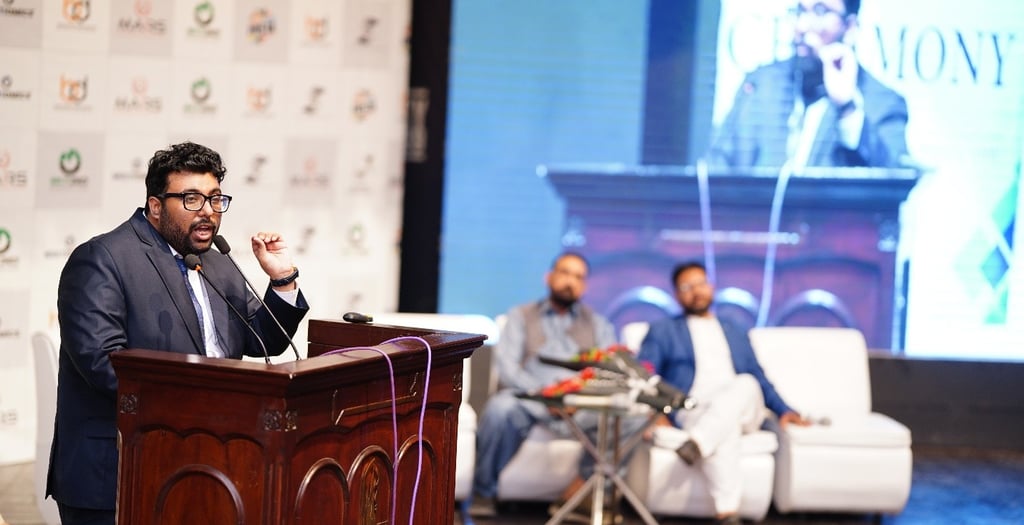

Precision Medicine and the Promise of One Patient One Cure
Three summers ago, a mother in Lahore sent me an email that still echoes in my mind. Her ten-year-old son, a bright boy with a rare neurodegenerative condition, had bounced from hospital to hospital, accumulating “average” treatments that never touched the biology driving his disease. When I scanned his genetic report, I spotted a splice site variant in ATM, the very gene I study every day now in my PhD. In that moment, “precision medicine” stopped being a trendy phrase and became a moral imperative: the right therapy for the one genome in front of us, not the statistical average behind us.
Why Precision Medicine Matters
Traditional oncology protocols were built for populations: standard doses, median survival curves, and response rates expressed in broad percentages. Yet each tumour carries its own constellation of mutations, epigenetic scars, and micro-environmental quirks. Treating cancer without accounting for those layers is like prescribing reading glasses without first asking about the patient’s eyesight. Precision medicine grounded in genomics, transcriptomics, proteomics, and AI-driven analytics reverses that logic: we decode the tumour first, design the therapy second. It is already paying dividends in rare leukaemias guided by trials and basket studies, and in immunotherapies matched to mutational signatures rather than organ of origin.
This U.S.-based nonprofit, One Patient One Cure, was launched by Dana-Farber and Harvard scientists to close the gap between high-tech diagnostics and real-world access. One Patient One Cure awaits and strives for microfunding for precision medicine cases, global data partnerships, and designs adaptive “micro trials” so that a single patient’s sample screen can inform therapy within weeks rather than years. Recently, One Patient One Cure announced a collaboration with Clinical Trials For All to boost global trial participation, a crucial step for patients whose mutations are too rare to populate conventional phase-III studies. By weaving philanthropy, open science, and AI-guided analytics, the organization turns precision medicine into a scalable model.
My own research lives at the intersection of ATM dysfunction and haematological malignancies. Beyond its textbook role in DNA damage repair, ATM governs immune cross-talk and metabolic stress responses, factors that often dictate why one leukaemia relapses while another goes into durable remission. By pairing those insights with One Patient One Cure’s patient-derived sample screens, we can test, in real time, whether an ATR inhibitor, a PARP inhibitor, or a metabolic modulator best neutralises that exact mutation in that exact patient.
Barriers We Still Need to Break
Data Silos: Hospital A’s genome never talks to Hospital B’s. One Patient One Cure is building international data trusts to change that.
Health-Equity Gaps: An $800 genome and a $400 000 CAR-T remain unreachable for most of the world. Micro-funding pools and pooled procurement can flatten cost curves.
Regulatory Drag: Trial frameworks optimized for blockbuster drugs struggle to evaluate precision cocktails in cohorts of ten. Adaptive Bayesian designs must become the norm.
How I’m Contributing
I have accepted an invitation to serve as a Collaborating Scientist at One Patient One Cure. My first task is this blog, but the collaboration runs deeper:
Publishing the Science: I will be co-authoring articles that reframe precision medicine around immune and metabolic vulnerabilities, synthesising data that many reviews still overlook.
Open-Source Pipelines: Through my Multiomics Academy in Pakistan, I will be releasing RNA-seq and miRNA-seq workflows so low-resource labs can profile tumours without million-dollar budgets.
Quarterly “Bench-to-Blog” Stories: Translating dense literature into narratives that patients and policymakers can act on.
How You Can Accelerate Precision Medicine
Patients & Families: Enrol in sequencing programmes and share de-identified data; every genome fills a knowledge gap.
Clinicians: Advocate for comprehensive molecular testing in refractory or rare cases—coverage often follows demand.
Scientists: Share valuable data and raw files; open repositories cut years off discovery timelines.
Philanthropists: Support mission-driven groups like One Patient One Cure that funnel donations directly into patient-guided research pipelines.
Looking Ahead
Imagine a 2030 clinic visit where your sample is taken at 9 a.m., an AI overlays your genome onto 20 million prior cases by noon, and a therapy micro-dose schedule prints before dinner. The hardware, algorithms, and know-how largely exist; the missing ingredients are integration and equitable access. That is precisely the bridge One Patient One Cure is building, one genome, one dataset, one story at a time.
I joined because I never again want to tell a parent that “average” is the best we can do. Precision medicine is personal. It’s urgent. And with the right collective effort, it is inevitable.

